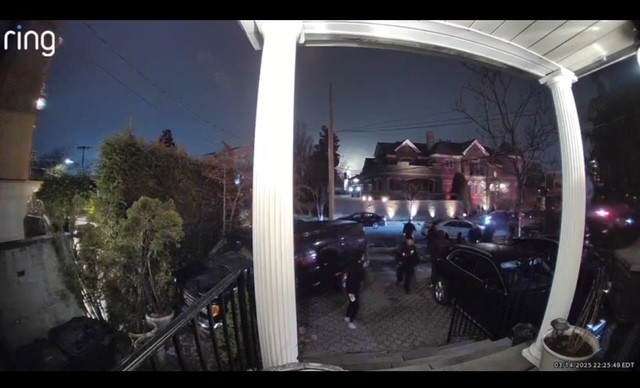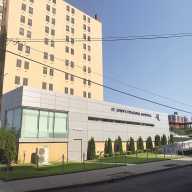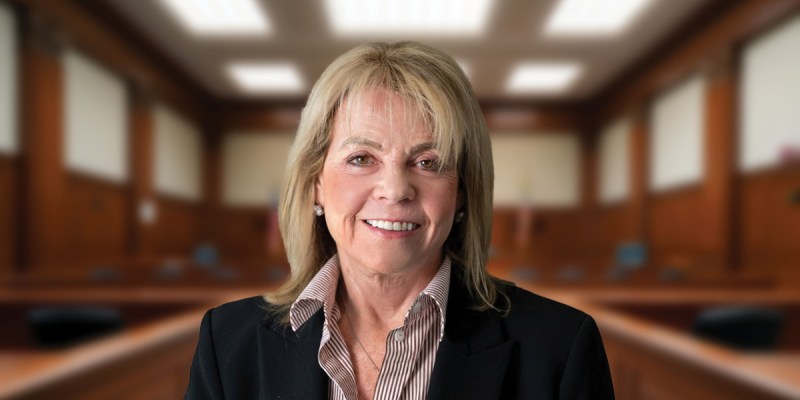High School Questions DOE Statistics And Policies
Charging that poor statistics fail to tell the entire story about Richmond Hill High School, students and parents made impassioned pleas to the Department of Education (DOE) to stop the proposed “turnaround” plan that would lead to the closure and replacement of the 115-year-old institution during a public hearing at the campus last Wednesday night, Apr. 18.

Richmond Hill is one of eight high schools in Queens at which the DOE plans to implement the federal “turnaround” model, which will result in the closure of the existing school in June and the opening of a new high school in September. The new school would have a new leader and moniker and could result in the dismissal of 50 percent of the existing teaching staff.
Deputy Chancellor Kathleen Grimm cited low graduation, attendance and safety rates as the reasons for the implementation of the model at Richmond Hill, but many speakers at last Wednesday’s hearing argued that Richmond Hill had made sizable improvements in recent years and the proposed change would blunt the progress made by students and teachers alike.
“If the DOE sees failure here, it is really the failure of the DOE,” said Kate Mooney, deputy chief-of-staff to City Council Member Elizabeth Crowley and a neighborhood resident.
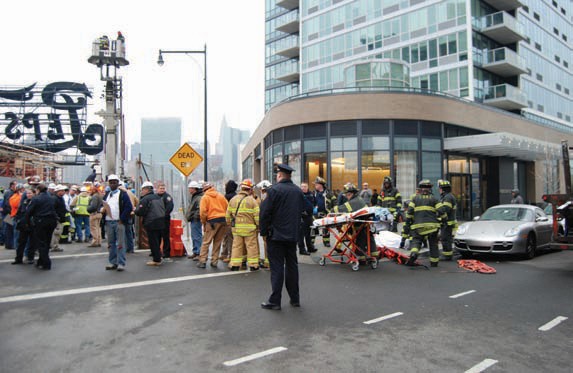
“Not once were we asked what our thoughts were,” said Katherine Fava, president of Richmond Hill High School’s student association. “The students will be greatly afhearing fected. … Who will write the recommendation letters?”
“Time in and time out, the Department of Education has done nothing to resolve safety issues” at the school, said teacher Charles DiBenedetto. “We don’t have the right to expel or transfer students who don’t want to be here. The only thing we can do is provide education and put up with the challenges.
The Panel for Educational Policy (PEP) will vote on the turnaround plans for all eight Queens high schools at their meeting tonight, Thursday, Apr. 26, at the Prospect Heights Campus in Brooklyn. Read next week’s Times Newsweekly for details about the session.
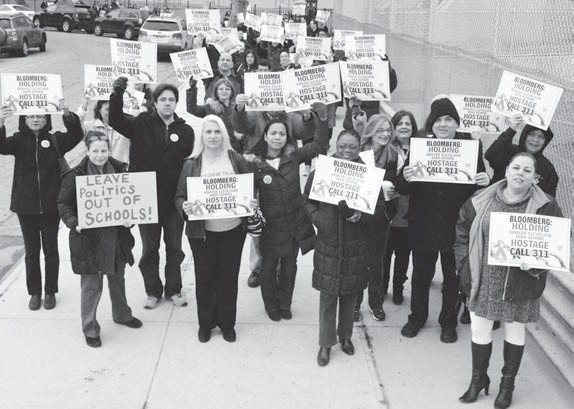
Should the panel agree to close Richmond Hill High School, all incoming sophomores, juniors and seniors at the school would be guaranteed admission to the new school; incoming freshmen would be enrolled at the new school under the Citywide High School Admissions Process.
Say improvement must be faster
The deputy chancellor acknowledged that Richmond Hill High School has started to show signs of improvement in recent years, pointing out in particular that its graduation rate had increased from 41.7 percent in 2007-08 to 59.8 percent in 2010-11.
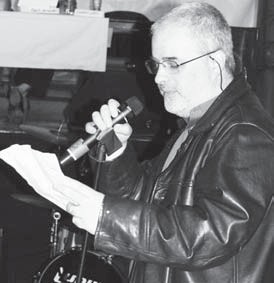
Around the high school’s auditorium, signs were posted indicating that Richmond Hill High School was a “persistently IMPROVING school,” contrary to the state Education Department’s previous classification of the school as being “persistently lowest achieving.” Petitions were also signed and put on display by students urging the DOE to abandon the turnaround model and continue with the “restart” initiative launched last September.
Under the restart program, Richmond Hill received additional academic support from an educational partner organization. The DOE ended the restart at Richmond Hill and other high schools earlier this year after the city lost federal funding for being unable to reach a deal with the United Federation of Teachers (UFT) on a teacher evaluation program.
Despite the progress made at Richmond Hill, Grimm stated that the DOE “believes with the new program, the new school could expand” those recent improvements. Additionally, the school would be eligible for a federal grant to receive over $1.6 million in additional aid annually.
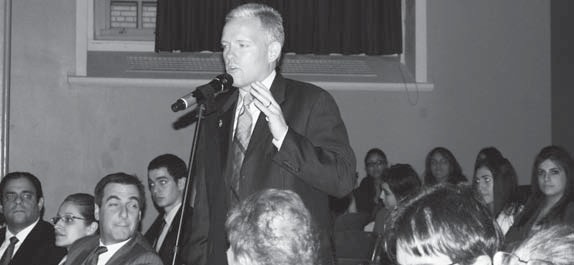
“We will build on the strongest elements of Richmond Hill and incorporate new elements in order to create a rigorous culture for teaching and learning,” Grimm said. At times, her remarks were met with boos from the audience; in response, she urged everyone “to be respectful.”
Safety and discipline were also cited as factors which led the DOE to pursue the turnaround model at Richmond Hill, the deputy chancellor stated. In addition to having one of the lowest attendance rates in the city, she pointed out that 70 percent of students reported on DOE surveys that they felt safe in hallways, locker rooms and bathroom within the campus, leaving the school in the “bottom 13 percent” of all city public high schools.
Additionally, Grimm stated that just 68 percent of teachers at Richmond Hill in their survey reported that they believed “discipline and order were maintained.”
No firing quota?
The deputy chancellor also sought to refute reports that the turnaround model would lead to the dismissal of at least 50 percent of the current Richmond Hill faculty. Under the plan, all current teachers would be required to reapply for their positions if they wished to stay on with the new school; the decision on whether to retain them would be made by a committee consisting of the new school principal, two appointees of the chancellor and two appointees of the UFT.
“The proposal does not require the turnover of any set percentage of staff,” Grimm said, citing requirements in the collective bargaining agreement. This statement would later be questioned by DiBenedetto, who stated that the school would be ineligible to receive federal funding if 50 percent of the current staff is retained under the turnaround model.
“All the money promised to our schools never comes to our schools,” he charged, pointing out that he previously taught at the now-defunct Far Rockaway High School, which underwent changes similar to those proposed for Richmond Hill before finally being shuttered.
“The DOE is not doing enough. The mayor and the chancellor are not doing enough. The only people you are failing are the children,” DiBenedetto concluded.
New boss already hired?
Some members of the school community also claimed that the DOE had already hired a principal for the new school well before the turnaround plan for Richmond Hill was approved-and, moreover, the incoming new leader had toured the campus.
One member of the panel suggested that this amounted to “a slap in the face” of the Richmond Hill school community and “a mockery of what democracy is meant to be.”
Melanie Fordin, an ESL teacher at Richmond Hill, claimed that the new school’s principal was an assistant principal from one of the high schools “handpicked by a mayor” with little knowledge of Richmond Hill’s social and economic situation.
“How will this assistant principal be able to relate to the needs of our students?” she asked. “Is this the best the city could come up with?”
Don’t blame the teachers
The statistics cited by Grimm in her report were questioned by students and parents alike, who charged that high-ranking officials at the DOE could not adequately judge the performance of Richmond Hill based solely on figures.
“If you look at our student body, everybody is a success story waiting to happen,” said student Jason Herde. “We can’t judge a book by its cover, the book being just statistics. It’s more than that. It would really hurt to see [Richmond Hill] close. I don’t want to see these teachers go away.”
Belizanda Gourgue of the Richmond Hill High School Parents Association stated that the turnaround plan was upsetting and “insulting” to the entire school community. She also chastised the DOE for demonstrating “a lack of respect for our teachers.”
“How can you make them feel like failures” with all of the effort they use to teach the school’s children, Gourgue stated. “They should get a standing ovation instead of a slap in their face.”
Craig Saunders, a dean at Richmond Hill, also criticized the DOE for seemingly holding all faculty members responsible for the academic problems of their students, many of which are skewed by personal issues away from campus.
“The staff has heard stories” from some students who have stated that they are abused at home or are homeless and spend some nights sleeping on a city bus, Saunders said.
“The students are not widgets that can be produced,” he added. “Our numbers are the symptoms of a greater societal problem. We are not the cause of that problem.”
“This is my school. It’s my kids. It’s my life and we want Richmond Hill to stay open,” added another teacher, Elena Karabelas.
“We don’t get the resources, and yet we still made great climbs in the graduation rate and test scores,” said James Suffern, also a teacher, adding that if the school is provided with greater financial support, “we can go so much further.”
Officials also oppose plan
“It seems it’s just a setup plan to make sure that these same children continue to fail,” said City Council Member Ruben Wills, who noted that he allocated hundreds of thousands of dollars to Richmond Hill for smartboards and other educational aids. “The mayor wants to use our students as weapons to fight a war against the union.”
“It takes a community to raise a child, which we have seen, and it takes one bad mayor to destroy it,” Wills added.
The plan was also condemned by Democratic District Leader Albert Baldeo, Scott Wolf, a representative of Assemblyman Michael Simanowitz and Nick Roloson of Assemblyman Mike Miller’s office.
Dmytro Fedkowskyj, the Queens representative on the PEP, vowed to vote against the turnaround plan for Richmond Hill High School and all other high schools.
“I’m voting ‘no’ because it’s a flawed policy that lacks a long-term vision,” he said. “Enough is enough. Mayor Bloomberg, give us back what was taken away. We are not in the market for another Band-Aid solution. Ten years of mayoral control didn’t fix our schools, and this won’t either.”





